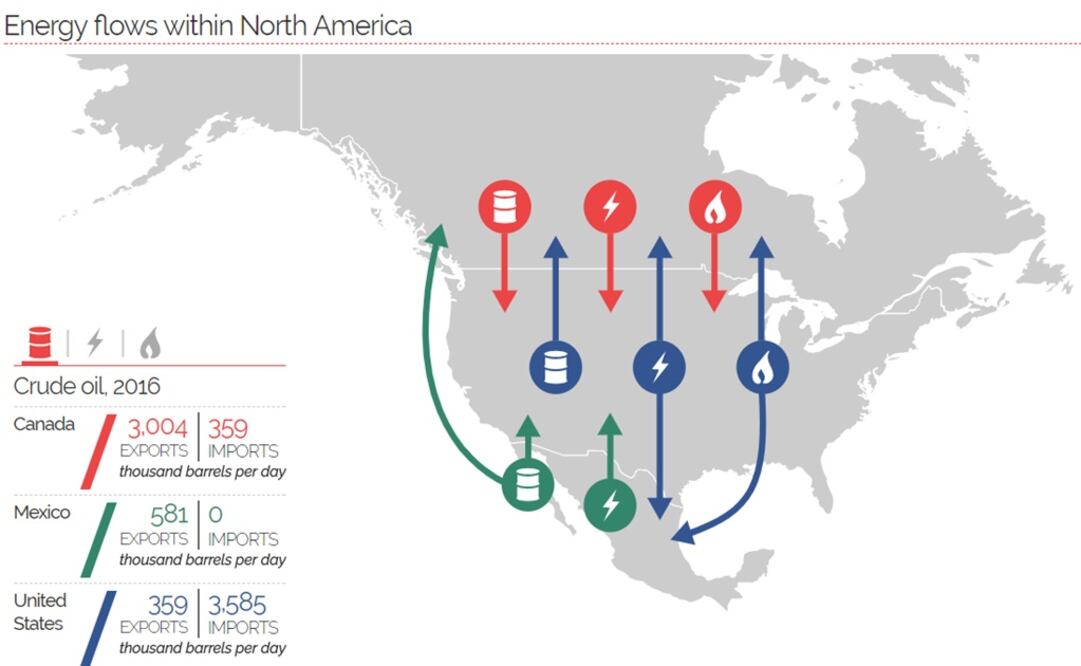Mexico
, Canada , and the United States are outlining their shared policy positions on further strengthening the competitiveness of th e North American energy industry seeking to form a single energy market.
The energy trade alliance would allow regional self-sufficiency by increasing the commercial relations of hydrocarbons and electricity between the three countries.
At the North American Energy Ministerial held on November 14, in Houston , Texas , United States Secretary of Energy Rick Perry , Canada’s Minister of Natural Resources James Gordon Carr, and Mexico’s Secretary of Energy Pedro Joaquin Coldwell launched the North American Cooperation on Energy Information ( NACEI ) website .
NACEI's overview on the energy flows in North America states: “the energy markets of Canada, Mexico, and the United States are becoming increasingly interdependent as physical infrastructure continues to be built across North America. With free trade treatment of many energy commodities, the three neighboring countries include each other's largest import and export markets for many of these commodities.”
Thus, it is expected that the production growth of both crude oil and natural gas will exceed the consumption, reducing imports from the three countries.
"Despite a 7% growth in total consumption of crude oil for refinery feedstock in Canada, Mexico, and the United States from 2013 to 2029, net imports into the Trilateral region are projected to decline by 97% because crude oil production increases by 42% over the same period,” the Trilateral Energy Outlook Project reads.
It is estimated that the three countries could reach capacity to export between 4 million and 6 million barrels per day ( bpd ) by 2018 and 2020 respectively.
Regarding gasoline and diesel between 27 million to 29 million bpd are expected to be exported by 2018 and 2028 , while demand levels off.
Moreover, the region is expected to become a net exporter of natural gas , as a result of a 43% growth in total production of this fuel by 2015 and 2029 .
“North American geographic isolation creates trade barriers to the rest of the world for energy commodities like natural gas and electricity, while other commodities such as crude oil and petroleum products travel more readily over water. As a result, Mexico, Canada, and the United States can be understood as a single (semi-integrated) regional energy market with internal commodity flows and external links to the rest of the world,” NACEI's outlook reads.
sg
Noticias según tus intereses
[Publicidad]
[Publicidad]














